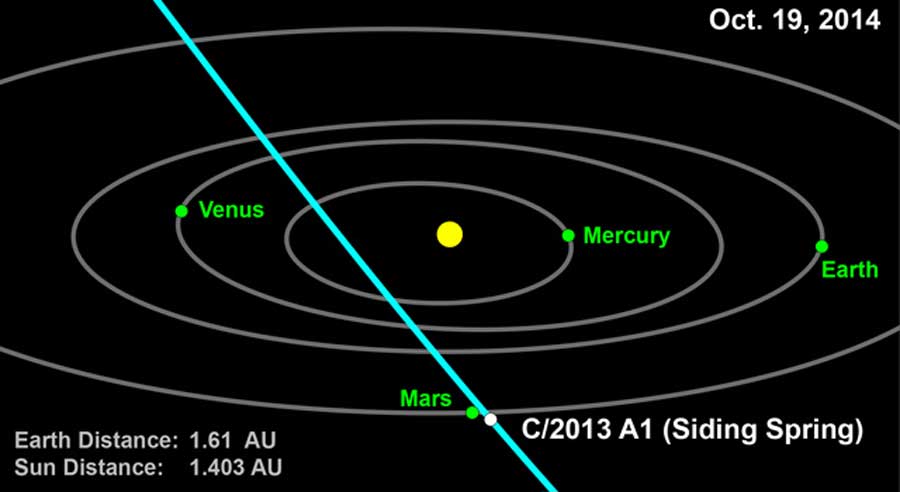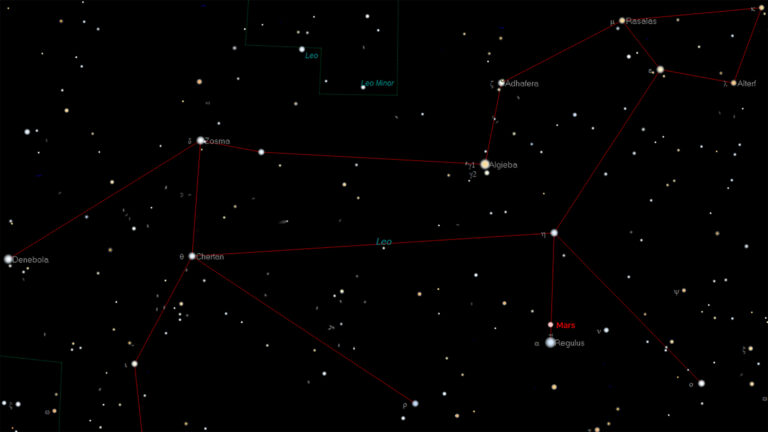Key Takeaways:
The latest trajectory of Comet Siding Spring generated by the Near-Earth Object (NEO) Program Office at NASA’s Jet Propulsion Laboratory in Pasadena, California, indicates the comet will pass within 186,000 miles (300,000 kilometers) of Mars, and there is a strong possibility that it might pass much closer. The NEO Program Office’s current estimate based on observations through March 1, 2013, has it passing about 31,000 miles (50,000km) from the Red Planet’s surface. That distance is about 2.5 times that of the orbit of the outermost moon, Deimos.
Scientists generated the trajectory for Comet Siding Spring based on the data obtained by observations since October 2012. Further refinement to its orbit is expected as more observational data is obtained. At present, Mars lies within the range of possible paths for the comet and the possibility of an impact cannot be excluded. However, since the impact probability is currently less than one in 600, future observations are expected to provide data that will completely rule out a Mars impact.
During the close Mars approach, the comet likely will achieve a total visual magnitude of 0 or brighter, as seen from Mars-based assets. From Earth, the comet is not expected to reach naked-eye brightness, but it may become bright enough (about magnitude 8) that it could be viewed from the Southern Hemisphere in mid-September 2014 through binoculars or small telescopes.
Scientists at the NEO Program Office estimate that Comet Siding Spring has been on more than a million-year journey, arriving from our solar system’s distant Oort Cloud. The comet could be complete with the volatile gases that short-period comets often lack due to their frequent returns to the Sun’s neighborhood.
Rob McNaught discovered Comet Siding Spring on January 3, 2013, at Siding Spring Observatory in Australia. A study of germane archival observations has unearthed more images of the comet, extending the observation interval back to October 4, 2012.
NASA detects, tracks, and characterizes asteroids and comets passing close to Earth using both ground- and space-based telescopes. The NEO Observations Program, commonly called “Spaceguard,” discovers these objects, characterizes a subset of them, and plots their orbits to determine if any could be potentially hazardous to our planet.










